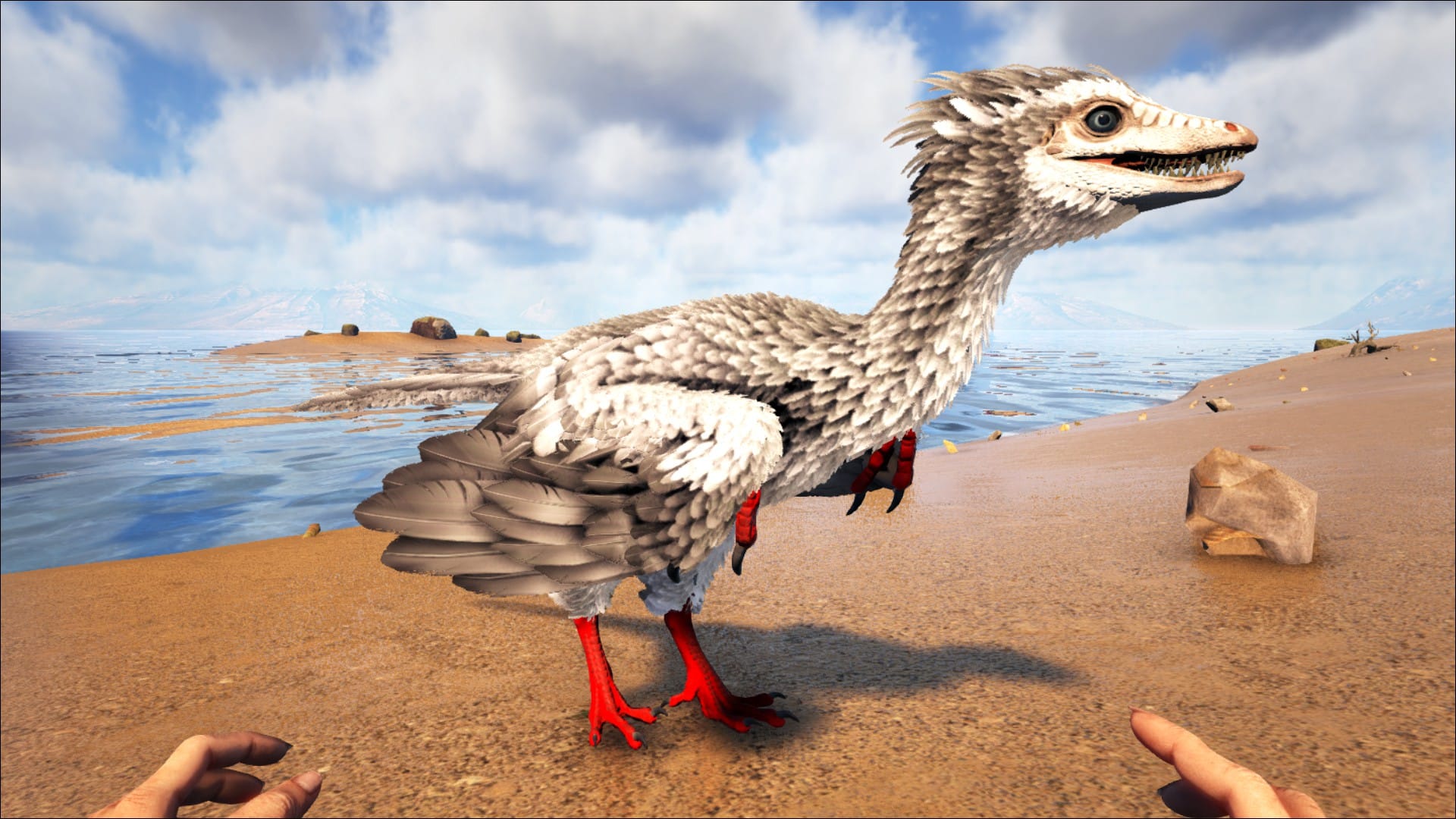Imagine leaping from a towering Redwood, fearlessly gliding to safety on the back of a feathered dinosaur. That’s the magic of the Archaeopteryx in ARK: Survival Evolved. This small, avian dinosaur acts as your personal, reusable parachute, making those heart-stopping falls a thing of the past. In this comprehensive guide, we’ll equip you with everything you need to know about finding, taming, and utilizing the Archaeopteryx, transforming you into a master of the ARK skies.
Taking Flight: Understanding the Archaeopteryx
Before we dive into the how-to, let’s get acquainted with the Archaeopteryx. Picture a creature caught between two worlds: a dinosaur with the delicate feathers and long tail of a bird. These creatures, often found near Redwood forests, are skittish but peaceful, preferring flight over fight.
But don’t let their gentle nature fool you. The Archaeopteryx possesses a remarkable ability: controlled gliding. This unique trait allows them to gracefully descend from any height, making them invaluable companions for navigating ARK’s treacherous landscape.
Taming Your Feathered Glider: A Step-by-Step Guide
Ready to make the Archaeopteryx your own? Here’s a breakdown of the taming process:
1. Locating Your Future Co-Pilot
Archaeopteryx prefer forested areas, particularly those teeming with giant Redwood trees. Keep an eye out near these majestic giants, and you’re likely to spot these feathered avians flitting through the branches.
2. The Art of Passive Taming
Unlike many creatures in ARK, the Archaeopteryx cannot be knocked unconscious and tamed through brute force. Instead, you’ll need to employ a gentler approach: passive taming.
Here’s the key: Archaeopteryx have a particular fondness for Chitin. Think of it as their version of candy. While the game suggests Simple Kibble or Pelagornis Kibble as alternatives, Chitin remains the most effective way to win their trust quickly.
3. Gathering Chitin: A Bug Hunter’s Guide
To amass a supply of Chitin, you’ll need to embrace your inner exterminator. Beetles, ants, scorpions – basically, any creepy crawly with an exoskeleton is a walking Chitin buffet. Hunt them down and harvest their exoskeletons to create a tempting treat for your future flying companion.
4. Taming Time: Patience is Key
Once you’ve located an Archaeopteryx and gathered your Chitin, it’s time for the delicate dance of taming. Remember, these creatures are easily startled. Approach slowly and calmly, using trees and rocks as cover to avoid sudden movements.
When you’re within range, gently offer the Archaeopteryx some Chitin. The taming process will take time, varying depending on the creature’s level. Stay patient, vigilant, and protect your potential new friend from any hungry predators lurking nearby.
5. Congratulations, You Have a New Best Friend!
Once the taming bar is full, congratulations! You’ve successfully tamed an Archaeopteryx, and a world of aerial possibilities awaits. This incredible creature is more than just a pretty face; it’s your ticket to a safer, more efficient ARK experience.
Unleashing the Archaeopteryx’s Potential: More Than a Parachute
While the Archaeopteryx’s gliding ability is undeniably its most notable feature, this ancient flyer offers a surprising range of uses:
The Ultimate Safety Net: No more plummeting to your doom. With an Archaeopteryx by your side, those accidental falls become graceful glides back to earth. This is particularly useful when exploring mountainous regions or navigating those precarious treetop bases.
Precision Maneuvers: The Archaeopteryx’s small size and exceptional maneuverability make it ideal for navigating tight spaces and dodging environmental hazards. Its speed and agility in the air surpass even those of larger flyers like the Pteranodon.
Strategic Combatant: Don’t underestimate the Archaeopteryx in combat. Its speed and precision make it a formidable force for hit-and-run tactics, aerial scouting missions, and even delivering surprise attacks on unsuspecting foes.
Resource Acquisition: The Archaeopteryx’s ability to access hard-to-reach areas expands your resource-gathering potential. Use its agility to collect rare resources from cliffsides, treetops, or other challenging locations.
Base Defense: Some players even utilize the Archaeopteryx in base defense strategies. Imagine a flock of these feathered guardians swooping down on invaders, providing an early warning system or harassing enemies from above.
Archaeopteryx: A Window into the Past
The Archaeopteryx in ARK isn’t just a product of fantasy; it’s a creature inspired by a real-life dinosaur. The fossilized remains of Archaeopteryx, discovered in Germany, provide a fascinating glimpse into the evolutionary link between dinosaurs and birds.
While the game mechanics capture the essence of the Archaeopteryx’s likely gliding abilities, it’s important to note that much about this ancient creature remains a mystery.
Take, for example, the diet of baby Archaeopteryx. Scientists have formulated theories based on clues from fossils and the behaviors of modern birds, but definitive answers remain elusive. Some believe these young dinosaurs feasted on a protein-rich diet of insects and larvae, while others suggest that adult Archaeopteryx may have regurgitated partially digested food to nourish their offspring.
Despite these lingering unknowns, one thing is clear: the Archaeopteryx holds a special place in our understanding of prehistoric life. Its inclusion in ARK: Survival Evolved allows players to interact with this fascinating creature, experiencing firsthand the wonder and mystery of a bygone era.
Conclusion: Embrace the Ancient Skies
The Archaeopteryx, with its unassuming appearance and remarkable abilities, embodies the spirit of adaptation and survival. It’s a testament to the fact that sometimes, the most valuable tools are the ones we least expect. This comprehensive guide has equipped you with the knowledge to tame, train, and utilize this extraordinary creature. Now, spread your wings and soar through the ARK skies with your newly-found feathered companion!
Amazingly, one of the largest dinosaurs ever, the Argentinosaurus huinculensis, has been discovered in Argentina. What’s even more fascinating is that recent studies suggest that the Aalesaurus may have been one of the ancestors of birds.
- Discover Long Black Pepper: Flavor & Health Benefits - April 25, 2025
- Shocking Twists: The Grownup Review: Unreliable Narration - April 25, 2025
- A Quiet Place Book vs Movie: A Deep Dive - April 25, 2025
















